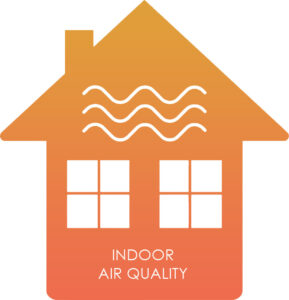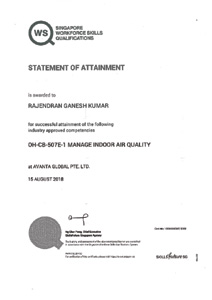Indoor Air Quality (IAQ)

TechnicAir provide Indoor Air Quality Assessments and develop Environmental Health & Safety. Human spend much of time indoors. The air that we breathe in our homes, in schools and in offices can put us at risk for health problems. Some pollutants can be chemicals, gases and living organisms like mold and pests.
Included with all testing in a complete documentation of the test results and certification of the rooms and devices tested.
Indoor air quality (IAQ) refers to the condition of the air within buildings and structures, particularly as it relates to the health and comfort of occupants. It encompasses various factors such as the concentration of pollutants, temperature, humidity, and ventilation. Monitoring and measuring indoor air quality is crucial due to the significant impact it can have on human health and well-being.
The purpose of measuring indoor air quality includes:
Health and Comfort: Poor indoor air quality can lead to a range of health issues, including respiratory problems, allergies, headaches, and fatigue. By measuring IAQ, one can identify and mitigate potential sources of indoor pollutants to create a healthier and more comfortable environment for occupants.
Productivity: Indoor air quality can influence cognitive function and productivity. Adequate ventilation and low pollutant levels contribute to a more conducive work or living environment, promoting better concentration and overall well-being.
Preventing Sick Building Syndrome (SBS): SBS is a term used to describe various symptoms experienced by occupants of a building without a specific identifiable cause. Measuring indoor air quality helps in identifying and addressing the factors contributing to SBS, such as inadequate ventilation, pollutants, or poor humidity control.
Compliance with Standards and Regulations: Many countries have established guidelines and regulations regarding indoor air quality to protect public health. Measuring IAQ allows building owners and managers to ensure compliance with these standards and take corrective actions if necessary.
Identifying Pollution Sources: Monitoring indoor air quality helps in pinpointing specific sources of pollution, such as volatile organic compounds (VOCs), mold, or allergens. This information is valuable for implementing targeted interventions to improve air quality.
Energy Efficiency: Monitoring IAQ is also essential in the context of energy-efficient buildings. Strategies to improve energy efficiency, such as sealing buildings tightly to conserve energy, can inadvertently lead to poor ventilation and indoor air quality. Measuring IAQ helps strike a balance between energy efficiency and maintaining a healthy indoor environment.
In summary, measuring indoor air quality serves the overarching goal of creating safe, comfortable, and healthy indoor environments for occupants while ensuring compliance with standards and regulations. It enables the identification and mitigation of potential issues, contributing to overall well-being and productivity in residential, commercial, and institutional spaces.
IAQ Certificate
Certificate No : 180000000615060
TechnicAir provide Indoor Air Quality Assessments and develop Environmental Health & Safety. Human spend much of time indoors. The air that we breathe in our homes, in schools and in offices can put us at risk for health problems. Some pollutants can be chemicals, gases and living organisms like mold and pests.
Included with all testing is complete documentation of the test results and certification of the rooms and devices tested.
All cleanroom testing is performed in accordance and compliant with Current Good Manufacturing Practices [cGMP], Institute of Environmental Sciences Technologies [IEST], and International Organization for Standardization [ISO]


Malaysia assessment based on DOSH Industry Code of Practice on IAQ 2010
Singapore assessment based on Singapore Standard SS554-2016
ASHRAE Standard 62-01
Full IAQ eleven (11) Parameters as follows:
- VOC (ppm)
- CO, (ppm)
- CO2, (ppm)
- Ozone (ppm)
- Formaldehyde (ppm)
- Particulate Matters (mg/m3)
- Operative Temperature & Dry Bulb Temperature (oC)
- Relative Humidity (%)
- Air Velocity (m/s)
- Total Bacterial Counts (cfu/m3)
- Total Fungal Counts (cfu/m3)
Certified by






